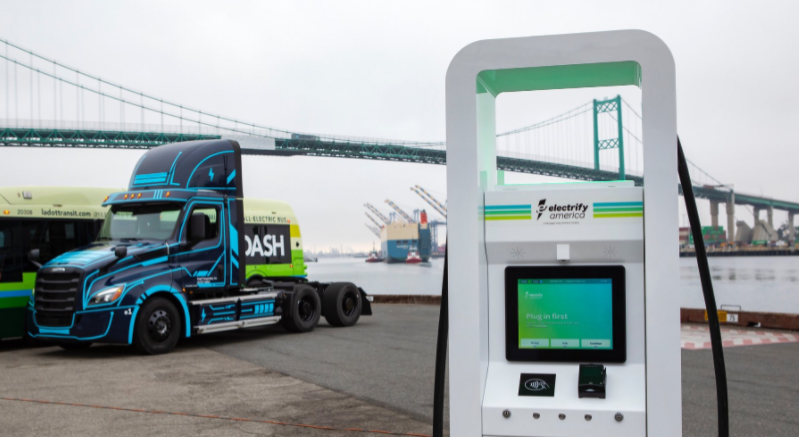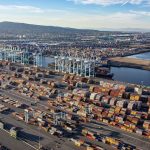The ports of Long Beach and Los Angeles on April 1, 2022, will begin collecting a rate of $10 per twenty-foot equivalent unit on loaded import and export cargo containers hauled by drayage trucks as they enter or leave container terminals.
The ports have set an industry-leading goal to achieve zero-emissions drayage trucking by 2035. The Clean Truck Fund (CTF) rate was created to help fund and incentivize the changeover to cleaner trucks. It will also generate monies – up to $90 million in the first year – to accelerate the development of zero-emissions technology.
Exemptions to the CTF rate will be initially provided for containers hauled by zero-emission trucks and low-nitrogen oxide-emitting (low-NOx) trucks. For more information about the CTF rate, a joint CTF rate collection fact sheet can be found at this link.
To receive the exemption when the rate collection begins on April 1, 2022, all such trucks must be registered as low-NOx or zero emission in the Port Drayage Truck Registry and complete a one-time vehicle confirmation inspection at the Terminal Access Center, 1265 Harbor Ave., Long Beach 90813. Please call the TAC helpline at 866-721-5686 to schedule an appointment from Monday through Thursday, 8 a.m. to 5 p.m.; and Friday, 8 a.m. to 4 p.m. Vehicle confirmation inspections will continue at the TAC on a rolling basis after April 1, 2022, as new low-NOx and zero-emission trucks are added to the registry.
PortCheck, a private company, was selected by both ports to collect the CTF rate. Starting April 1, 2022, cargo owners or their agents must be registered in the PortCheck system to arrange to pay the CTF rate prior to pick up or drop-off. The CTF rate web portal will be connected to the existing PierPass system starting March 21, 2022, for registration HERE. Users of the web portal will be able to begin claiming containers and providing for advanced payment of the CTF rate on March 29, 2022. A PortCheck help line will be listed on the PortCheck webpage for any technical support of the CTF rate collection system.
Informational workshops on the CTF rate and collection mechanism have been held for cargo owners, their agents, and the trucking community. Videos and presentations of the workshops are on the CAAP website at cleanairactionplan.org/strategies/trucks.
Phasing out older, more polluting trucks has been key to clean air gains the San Pedro Bay ports have made since the original Clean Truck programs were launched in 2008. Diesel emissions from trucks have been cut by as much as 97% compared to 2005 levels. Trucks remain the ports’ largest source of greenhouse gas emissions and the second highest source of nitrogen oxides, a contributor to regional smog formation. Each port’s tariff requires payment of the CTF rate by cargo owners or their authorized agents, and includes a provision prohibiting payment by drayage truck drivers or operators.
Source: Hellenic Shipping News






